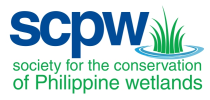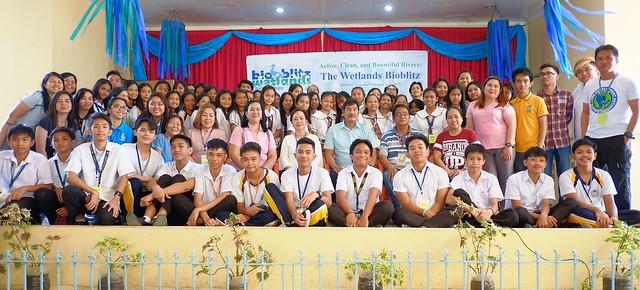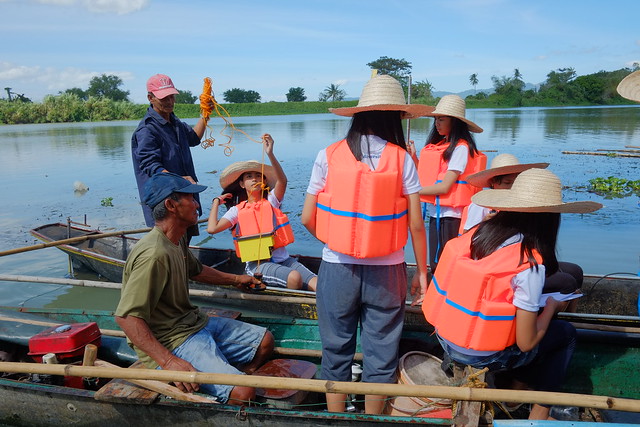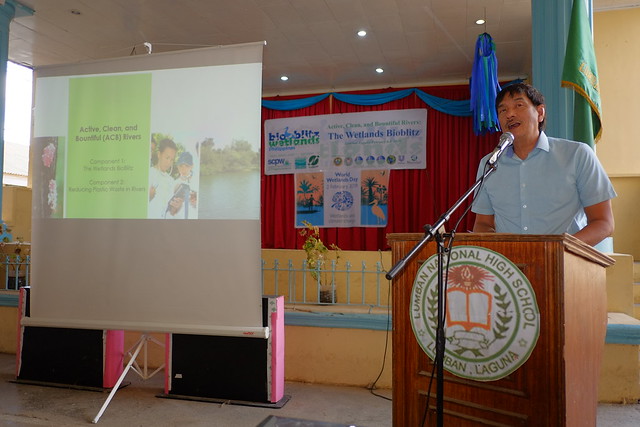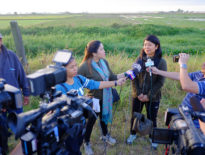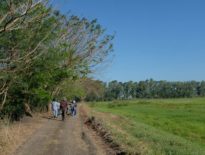Lumban, Laguna — The Society for the Conservation of Philippine Wetlands, Inc. conducted a Wetlands BioBlitz activity for Lumban-Pagsanjan River on 6-8 February 2019 at Lumban National High School(LNHS) with field work at the Lumban stretch of the said river. The activity is one of the components of SCPW’s flagship program titled “Active, Clean, Bountiful (ACB) Rivers with funding support from Nagao Wetland Fund.
The event was also in line with the celebration of World Wetlands Day. This Wetlands BioBlitz was participated by 83 individuals composed of students and teachers of LNHS, Local Government Unit (LGU) of Lumban, Laguna, and technical experts from SCPW, University of the Philippines – Los Baños (UPLB), and from various agencies and offices under the Department of Environment and Natural Resources namely: Biodiversity Management Bureau (BMB) Ecosystems Research and Development Bureau (ERDB), Laguna Lake Development Authority (LLDA), and River Basin Coordinating Office (RBCO). Other partners that provided support are Unilever Philippines and Maynilad.
The Wetlands BioBlitz is a 3-day activity that aims to characterize and assess priority rivers employing citizen-science and increasing the awareness and capacity of local communities to take action for their wise use. Initially, three rivers draining to Laguna de Bay are included in this phase, these are Pangil, Pagsanjan-Lumban and Mabitac. Around 50 High School students participated in the activity which included learning sessions about wetlands and its importance, field work, data processing, reporting and visioning and action planning. In their action plan, the students are guided on what actions they can do at their level in conserving wetlands, in this case the Pagsanjan-Lumban River. The two major activities that the students will implement are the conduct of IEC among the students of LNHS and collection of plastic waste for recycling into school chairs. The latter is another component of the ACB Rivers that deals with reducing plastic pollution in rivers which is supported by Unilever Philippines.
Preliminary results of the field study yielded 18 species of insects, 26 species of birds, 24 species of plants, and two (2) species of aquatic macrofauna. Other features of the river that were studied are hydrology, water quality, geographical boundaries and map, and the ecosystem services being provided by the Lumban-Pagsanjan River using the Rapid Assessment of Wetland Ecosystem Services (RAWES) approach.
The final results, analysis and recommendations of the activity will be presented to the LGU of Lumban and the school officials of LNHS in March 2019. It is hoped that these data and information will contribute to the body of knowledge on wetlands, particularly in the Pagsanjan-Lumban River and will guide future planning and activities for its conservation and wise use. As Mayor Rolando Ubatay emphasized in his Welcome Remarks, this activity is a significant contribution of Lumban to the clean-up and rehabilitation of Manila Bay. (Darry Shel Estorba)
